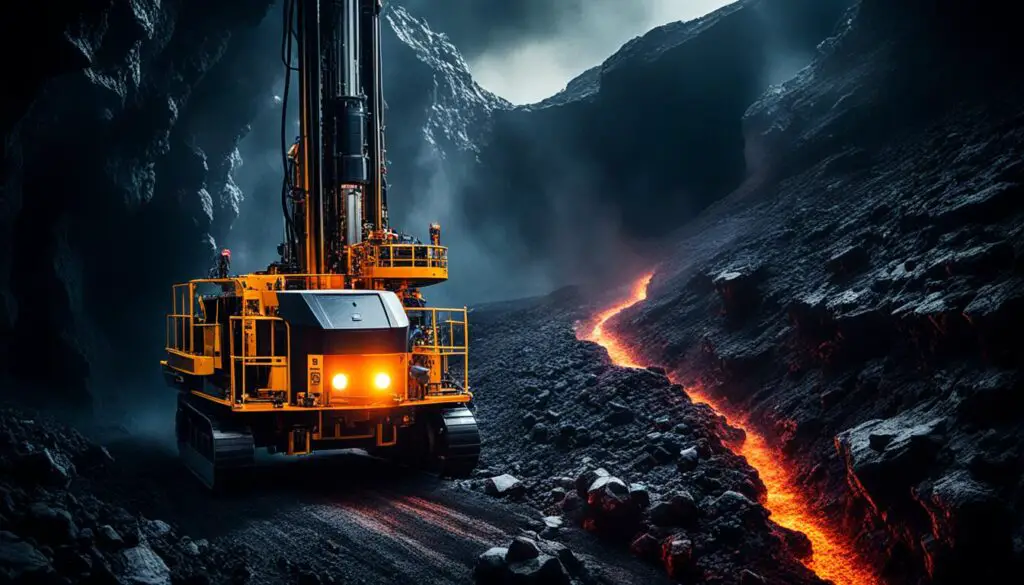In today’s rapidly evolving world, groundbreaking innovations are redefining the possibilities of what we can achieve. From the semiconductor industry to deep-earth exploration and sustainable transportation, these innovations are shaping the future and opening up a world of new opportunities.
One of the most exciting developments in the semiconductor industry is the introduction of three revolutionary chips that are set to transform the way we compute and process data. NVIDIA’s Blackwell GPU is pushing the boundaries of performance, offering quadruple training performance and a staggering 30-fold increase in inference performance. This breakthrough will revolutionize AI applications, scientific research, and the capabilities of IoT devices.
Another remarkable innovation comes from Cerebras and their wafer-scale engine chip. With an astonishing 4 trillion transistors, this chip is capable of handling massive AI models and datasets with unprecedented speed and efficiency. The Cerebras chip has the potential to revolutionize AI research and pave the way for new discoveries in various fields.
Lastly, the EnCharge analog chip introduces a pioneering approach to computing, leveraging charge-domain computation for superior energy efficiency. With this chip, we can expect significant advancements in energy-efficient computing, reducing the environmental impact of our technological advancements.
Table of Contents
Key Takeaways:
- NVIDIA’s Blackwell GPU offers quadruple training performance and a 30-fold increase in inference performance, revolutionizing AI and IoT devices.
- Cerebras’ wafer-scale engine chip boasts 4 trillion transistors, enabling unprecedented speed and efficiency for handling massive AI models and datasets.
- The EnCharge analog chip introduces a pioneering approach to computing, leveraging charge-domain computation for superior energy efficiency.
- These groundbreaking innovations are poised to reshape the technological landscape and enable breakthroughs in AI, scientific research, and IoT devices.
- Stay tuned for more exciting developments as technology continues to push the boundaries of what is possible!
China’s Remarkable Achievement in Deep-Earth Exploration
China has achieved a groundbreaking milestone in deep-Earth exploration with the successful drilling of the Shenditake 1 hole in the Tarim Basin. This drill has breached a depth of 10,000 meters, making it China’s deepest drill hole for scientific exploration.
The project showcases China’s ambition to comprehend the Earth’s deepest secrets and highlights its commitment to securing national energy needs.
The data collected from such depths has the potential to revolutionize our understanding of Earth’s evolution, life’s origins, and strategies for climate change mitigation and natural disaster management.

The Tarim Basin: A Window into Earth’s Hidden Mysteries
The Tarim Basin, located in northwest China, is a fascinating region known for its geological significance. Spanning an area of approximately 570,000 square kilometers, the basin is home to diverse ecosystems and remarkable geological formations.
By drilling into the depths of the Tarim Basin, scientists gain access to ancient rock formations and other geological layers that hold valuable clues about Earth’s history and the processes shaping our planet over millions of years.
Unraveling Earth’s Evolution: Insights from Deep Drilling
“The successful drilling of the Shenditake 1 hole exemplifies China’s dedication to pushing the boundaries of scientific exploration. It offers a unique opportunity to delve into the mysteries of the Earth’s deep interior and better understand the forces that have shaped our planet.” – Dr. Li Xiaojun, Geologist
Deep drilling initiatives, such as the Tarim Basin drill, provide scientists with unprecedented access to ancient sedimentary layers, fault lines, and even fluid samples from deep within the Earth. By analyzing these samples, researchers can unlock valuable insights into geological processes, seismic activity, and the evolution of Earth’s crust.
Applications in Energy and Environmental Research
The deep-Earth exploration efforts in China’s Tarim Basin have significant implications for energy and environmental studies. Scientists can investigate the potential for tapping into deep geothermal energy reservoirs, improving our understanding of renewable energy sources.
Additionally, the data obtained from deep drilling can enhance environmental research, helping scientists assess the impact of human activities on the deep Earth and evaluate strategies for sustainable resource management.
Stadler Sets Guinness World Records with Hydrogen-Powered Train
Stadler, a renowned name in the rail transport industry, has achieved a groundbreaking feat with its FLIRT H2 hydrogen-powered train. This remarkable train has etched its name in the Guinness World Records by traveling the longest distance without the need for refueling or recharging—a staggering 1,741.7 miles (2,803 kilometers). This not only showcases Stadler’s commitment to sustainable solutions but also highlights the potential of hydrogen technology in revolutionizing rail transport.
The FLIRT H2 is revolutionizing the way we think about train travel. By integrating innovative fuel cell and hydrogen storage systems, this train can operate without emitting harmful pollutants, making it an excellent choice for routes without overhead lines. Stadler’s FLIRT H2 exemplifies the perfect balance between sustainability and performance, offering a comfortable and efficient mode of transportation.
Stadler’s recent orders for hydrogen trains in California and Italy further solidify its pioneering position in the field. With its cutting-edge technology and forward-thinking approach, Stadler continues to lead in advancing alternative drive solutions for rail transport. The FLIRT H2’s sustainable design, spacious seating capacity, and impressive speed make it an ideal choice for environmentally conscious travelers and rail operators.
In today’s world, sustainability is a pressing concern, and Stadler’s FLIRT H2 is at the forefront of delivering eco-friendly transportation solutions. With its remarkable Guinness World Records achievement, Stadler has firmly established itself as a leader in the industry, shaping the future of hydrogen-powered trains and contributing to a greener world.
FAQ
What are the groundbreaking innovations in the semiconductor industry?
The semiconductor industry is experiencing a transformative era with the introduction of three groundbreaking chips: NVIDIA’s Blackwell GPU, the Cerebras wafer-scale engine chip, and the EnCharge analog chip.
What are the exceptional capabilities of NVIDIA’s Blackwell GPU?
NVIDIA’s Blackwell GPU revolutionizes performance standards with its quadruple training performance and a 30-fold increase in inference performance.
What sets the Cerebras wafer-scale engine chip apart?
The Cerebras wafer-scale engine chip stands out with its 4 trillion transistors, offering unprecedented speed and efficiency for handling massive AI models and datasets.
How does the EnCharge analog chip introduce a pioneering approach to computing?
The EnCharge analog chip leverages charge-domain computation for superior energy efficiency, making it a pioneering advancement in computing.
What milestone has China achieved in deep-Earth exploration?
China has achieved a groundbreaking milestone in deep-Earth exploration with the successful drilling of the Shenditake 1 hole in the Tarim Basin, breaching a depth of 10,000 meters.
What are the potential impacts of the deep-Earth exploration project in the Tarim Basin?
The data collected from such depths has the potential to revolutionize our understanding of Earth’s evolution, life’s origins, and strategies for climate change mitigation and natural disaster management.
What Guinness World Records title did Stadler’s FLIRT H2 hydrogen-powered train secure?
Stadler’s FLIRT H2 hydrogen-powered train secured the Guinness World Records title for the longest distance traveled without refueling or recharging, an impressive 1,741.7 miles (2,803 kilometers).
How does the FLIRT H2 contribute to sustainable rail transport?
The FLIRT H2 integrates fuel cells and hydrogen storage systems, enabling emission-free operation on routes without overhead lines, highlighting Stadler’s commitment to sustainable rail transport solutions.
What makes Stadler a leader in advancing alternative drive solutions for rail transport?
Stadler continues to lead in advancing alternative drive solutions for rail transport with the innovative design, seating capacity, and maximum speed of the FLIRT H2 hydrogen-powered train.


